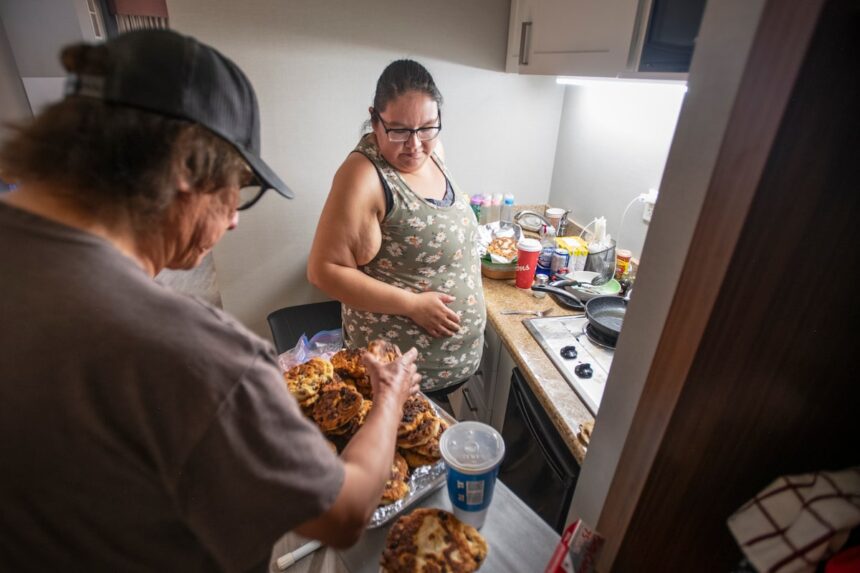As smoke billowed through their communities and flames encroached upon their homes, thousands of Northern Ontario residents found themselves abruptly uprooted from familiar surroundings and relocated to the bustling Greater Toronto Area. The stark transition from remote wilderness to urban sprawl has created both challenges and moments of unexpected connection for these evacuees.
“I’ve never seen buildings this tall in my life,” says Martha Beardy, a 67-year-old elder from the Kashechewan First Nation, as she gazes up at the Toronto skyline from her temporary accommodation. “The noise never stops here, not even at night. Back home, you hear the wind in the trees and maybe a wolf howling.”
The evacuation operation, one of the largest in Ontario’s history, began in late May when severe wildfires threatened multiple northern communities. Provincial emergency management officials coordinated with Indigenous Services Canada to relocate over 4,000 residents to safety across southern Ontario, with the majority finding temporary shelter in hotels throughout the GTA.
For many evacuees, the cultural and environmental differences have proven disorienting. Accustomed to close-knit communities where everyone knows one another, many now navigate anonymous hotel corridors and crowded city streets. Traditional foods are difficult to find, and everyday activities require learning new systems of transportation and commerce.
The Peetabeck Health Services team, led by Director Janet Nakogee, has established an impromptu cultural center in a conference room at one of the hotels housing evacuees from Fort Albany First Nation. “We’re offering traditional healing circles, language classes for the children, and communal meals whenever possible,” explains Nakogee. “It’s crucial that our people maintain their cultural connections while displaced.”
Toronto-based organizations have responded with support initiatives. The Native Canadian Centre of Toronto has organized supply drives and cultural events, while several faith groups have opened their doors for community gatherings. School boards across the GTA have worked to accommodate evacuee children in summer programs, providing both educational continuity and social opportunities.
“The generosity we’ve experienced here is overwhelming,” says William Metatawabin, a council member from Fort Albany First Nation. “But many of our elders are struggling with the heat, the pollution, and being disconnected from the land. They ask daily when we can return home.”
That question remains difficult to answer. Provincial officials monitoring the wildfire situation report that while some blazes have been contained, others continue to threaten infrastructure and make safe return impossible for several communities. Damage assessments reveal some areas will require significant rebuilding before residents can return.
For younger evacuees, the experience has been a mix of anxiety and discovery. Seventeen-year-old Darren Wesley from Attawapiskat First Nation has been documenting his temporary life in Toronto through TikTok videos that have garnered thousands of views. “I miss home, but I’ve also gotten to visit the aquarium and a Blue Jays game,” he says. “I’m trying to learn everything I can while I’m here.”
Health professionals warn about the psychological impact of displacement, particularly for those who have experienced historical trauma. “Forced relocation, even when necessary for safety, can trigger intergenerational trauma related to residential schools and other historical removals,” explains Dr. Suzanne Stewart, Director of the Waakebiness-Bryce Institute for Indigenous Health at the University of Toronto.
The provincial government has allocated $22 million for emergency response to the northern wildfires, with additional funding expected as the situation evolves. Meanwhile, climate scientists point to the increasing frequency and severity of these fires as evidence of climate change impacts on northern communities.
As weeks of displacement stretch into months for some evacuees, both practical and philosophical questions arise about the future. Will rebuilding efforts consider climate resilience? How can traditional ecological knowledge inform wildfire management? And perhaps most immediately for those living in hotel rooms far from home: how do communities maintain their cultural identity when physically separated from their traditional territories?
As Canada faces what may become increasingly common climate-driven displacements, the experiences of these Northern Ontario evacuees offer important lessons about emergency response, cultural preservation, and the profound meaning of home. When the smoke finally clears, what will have changed—and what must remain the same?


















